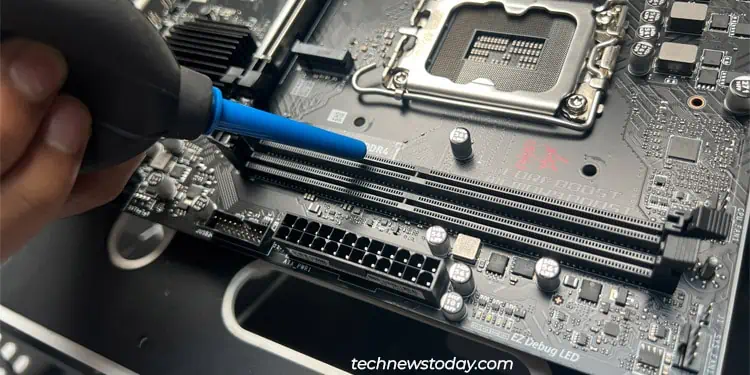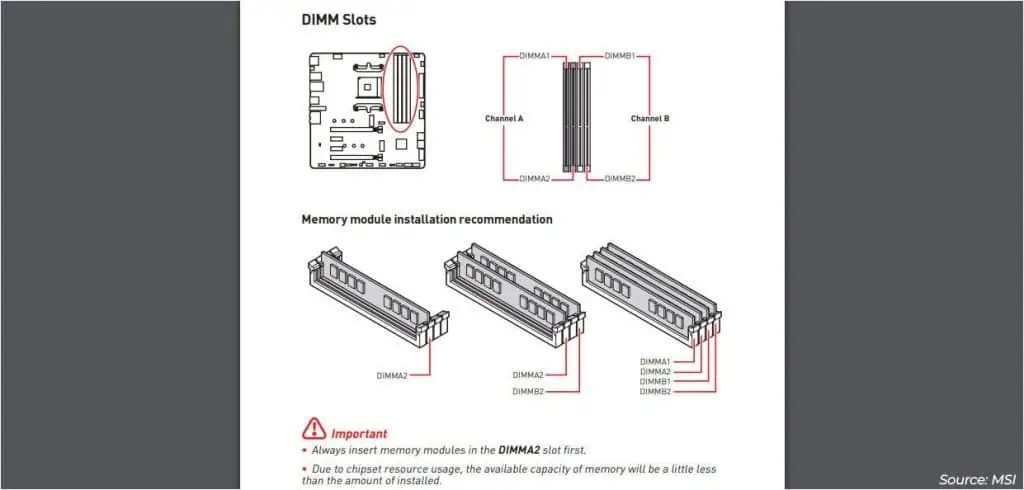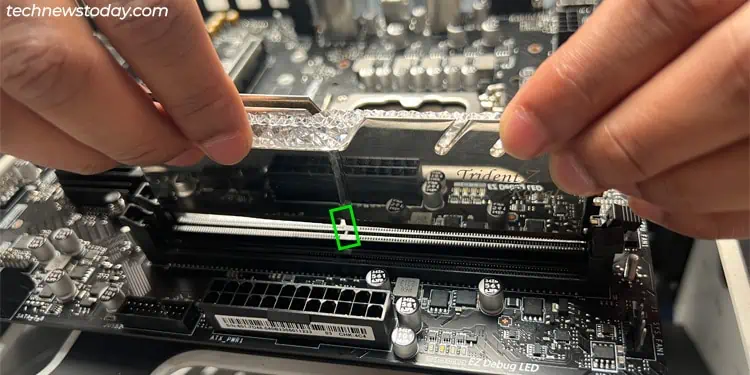Most MSI boards come with theBoot,VGA,DRAM, andCPUindicators (collectively called EZ Debug LEDs). When your system can’tget past POST, one of these LEDs will remain lit. This is to give you a general idea of what component is preventing your system from booting.
Problems like thesystem not detecting any boot devicesor incorrectly installed RAM modules are super common. Depending on which LED is lit, you cantake the appropriate troubleshooting stepslike reseating the RAM modules or verifying the boot device connection.
I myself use these LEDs almost weekly to diagnose such problems on ourTechNewsTodaysystems. I’ll explain how you may utilize the EZ Debug LEDs tofix any POST issueson your own MSI system in this article.
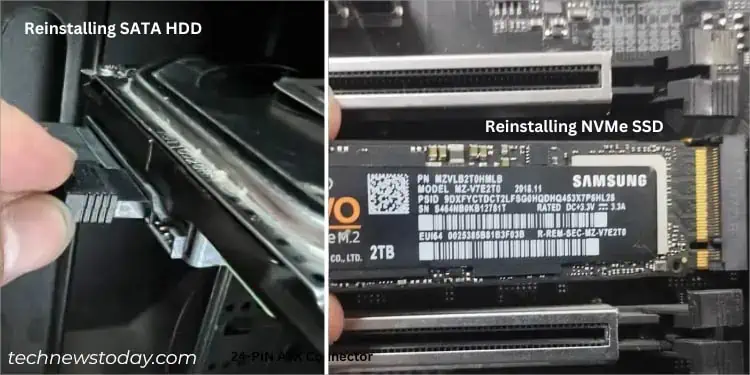
Note:The MSI EZ Debug LEDs lighting upduringPOST is normal and intended. That’s the system checking that each component is detected. They will turn off after successfully completing POST. You should only be concerned if your system is stuck in POST and cannot boot.
The boot LED indicates that thesystem can’t find any bootable devices. This could be because your boot device is physically disconnected or because there’s no OS on the drive.
I recommend the following troubleshooting process in this case:
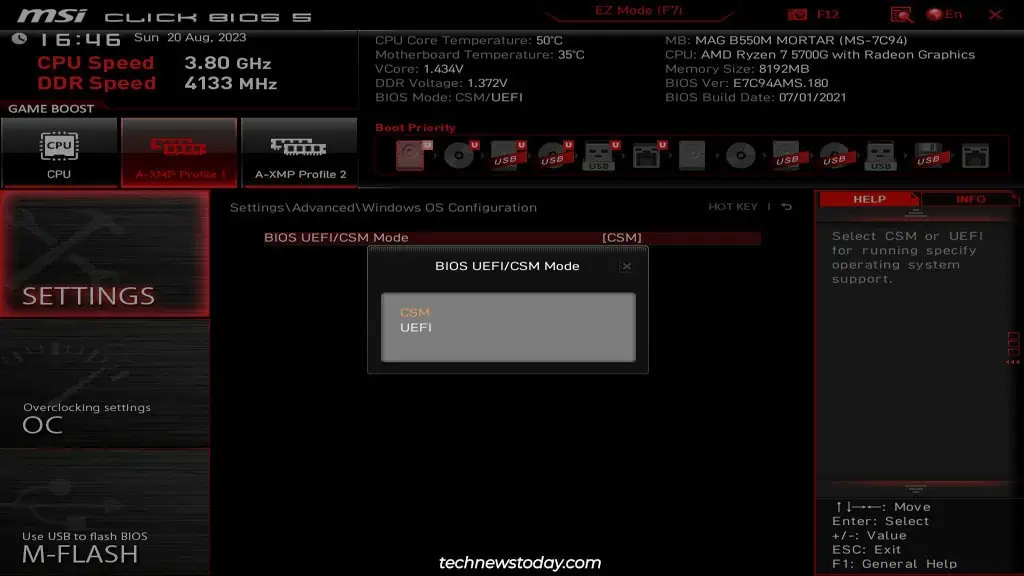
A lit VGA LED indicates problems with your graphics processor (integrated graphics or external GPU). The troubleshooting process for this LED is pretty simple:
In my experience, the DRAM LED is the one that lights up most often. I’ve seen it happen when I used incorrect slots. One time it happened becauseone of my sticks had died. It also pops up randomly sometimes after an abrupt power cut.
While the causes vary a lot, reseating the modules fixes the problem in most cases.
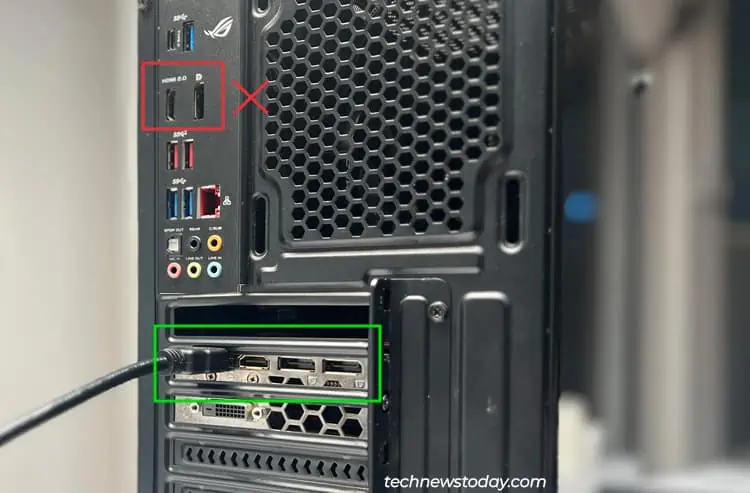
If reseating didn’t help,one of the slotsor modules is probably faulty. To figure out which one,
TheCPU LEDlights up the least, and it’s also the hardest one to fix for the average user. Sometimes, people install theirIntelorAMD processorsincorrectly. Or, they remove the coolerwhile the CPU is stuck. All of these lead to bent pins ora dead processorin the worst case.
Let’s not be so quick to assume the worst, though. Here’s the process I recommend for troubleshooting the CPU LED:
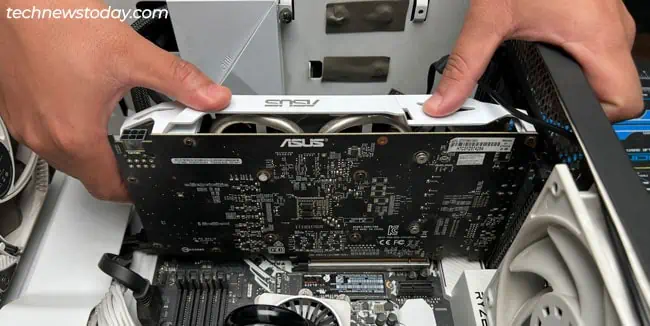
Additional Troubleshooting Steps
Your components work in unison to form a system, which can cause the EZ Debug LEDs to be a bit misleading at times.
For instance, if your processor doesn’t support integrated graphics, your system could misinterpret this as the CPU’s fault. Even though this is a graphics-related error, the CPU LED may light up. Or bent CPU pins may cause the DRAM LED to light up.

